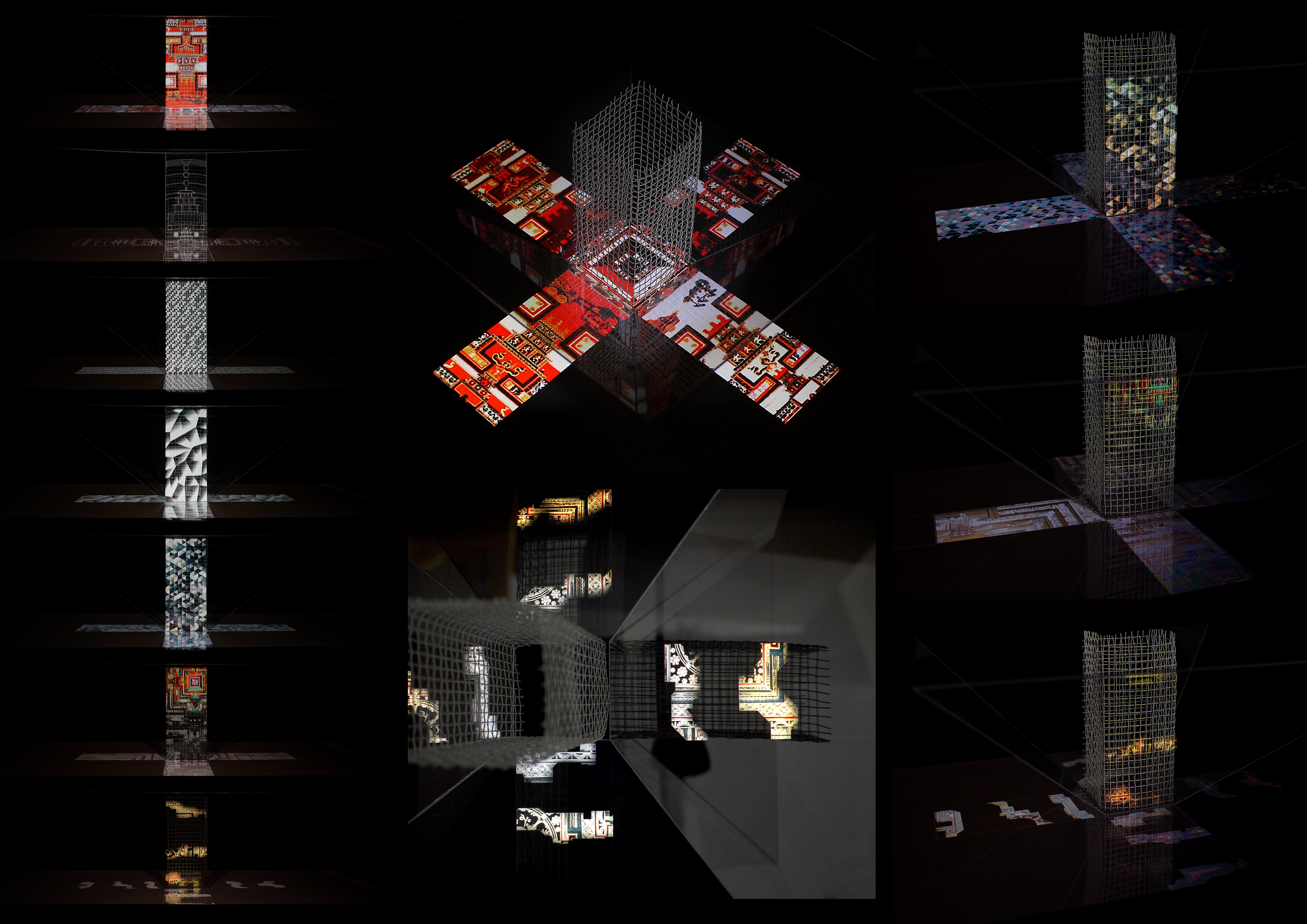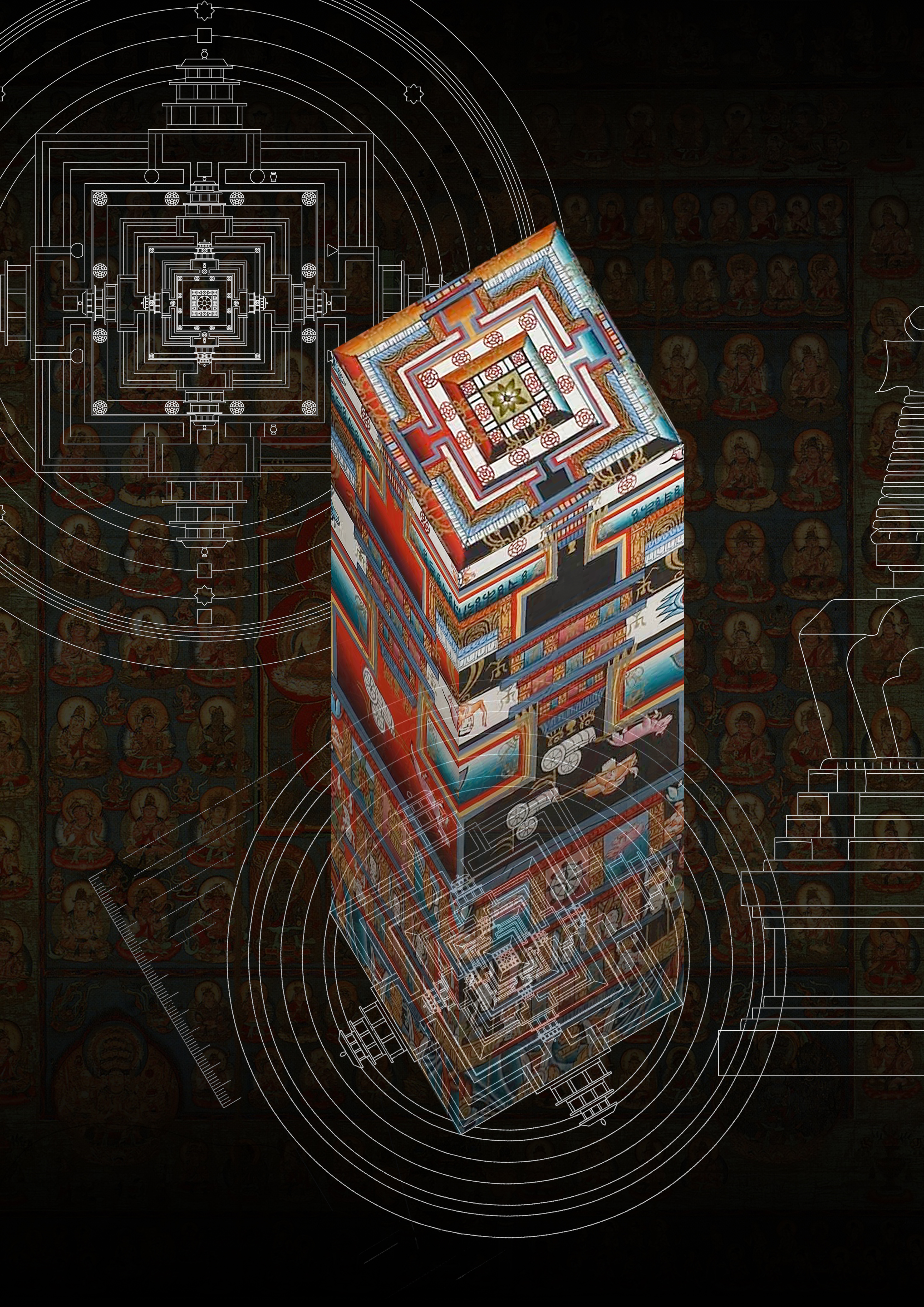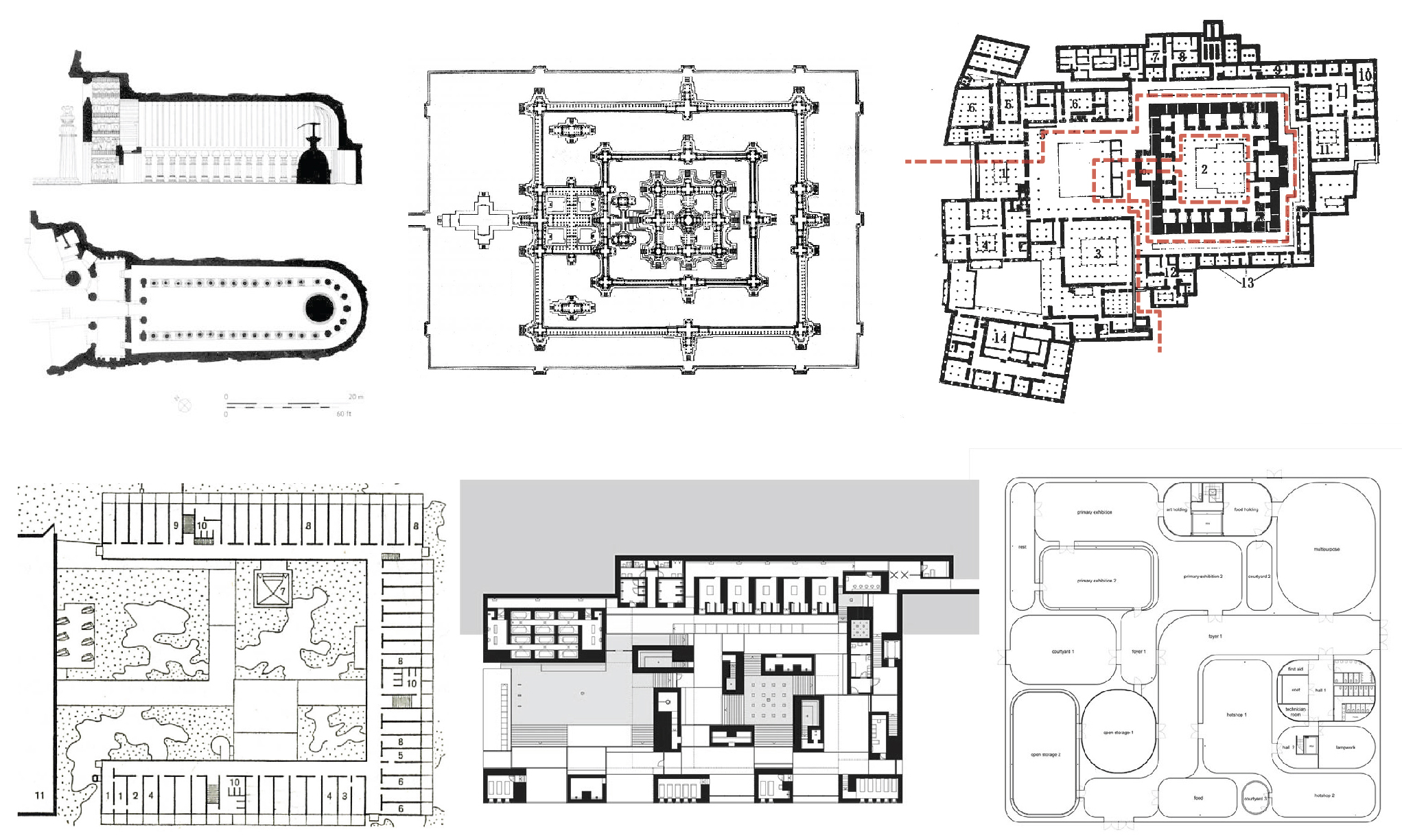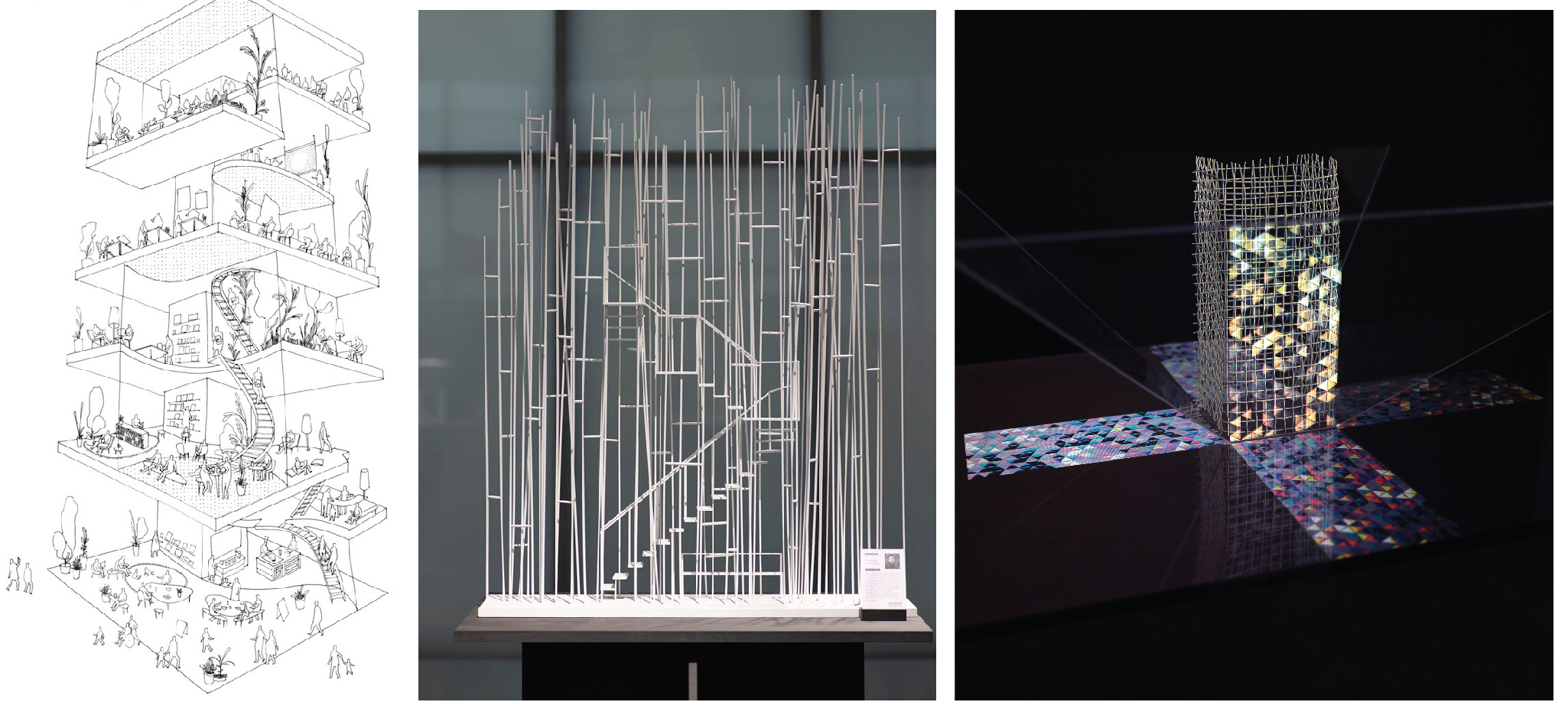|


This thesis aims to explore the expression of Buddhist cosmic diagram- Mandala in a Vertical monastery.
WHAT?

[1] 19th Century Japanese scroll painting of the universe with Mt. Sumeru in the center
[2] Samye Monastery, Tibet [3] High density urban environment, Hong Kong
This thesis aims to explore the way architecture bring human depart from the secular world. Library, museum, church and monastery have the same agenda in this circumstance. A Buddhist monastery in high density urban area is selected as the test case to explore the architectural relation between mental and secular world in this thesis.
Monastery is the architecture that response to the spiritual world of human and fulfills the basis needs for living. So monastery is a condensation of human civilization and strongly represents the identity of a race.
With the revival of Buddhism in contemporary era and the increasing demand for land in urban area, the high rise tower in urban area would be the dominant form of monastery in the future. The thesis would target site in high density urban area. And explore a better solution for designing monastery tower by interpreting the Mandala in the vertical dimension.
In Vajrayana Buddhism, the architecture is organized base on the diagram of mandala. Mandala is a 2D diagram representing the Buddhist cosmic concept which is beyond 3D world. In order to organize the vertical monastery well, the Mandala should be interpret in a vertical dimension. A ritual route should be placed in the monastery so help the visitor remind the Buddhist practice and experience the Mandala in a spatial way.
WHY?

[1] Chaitya, Ajanta Caves, India 2nd Century BC [2] Angkor Wat, Cambodia, 12th Century
[3] Jokhang Temple and the Circumambulation, Lhasa, Tibet
[4] Convent of La Tourette, Le Corbuiser [5] The Therme Vals, Peter Zumthor
[6] Glass Pavilion at the Toledo Museum of Art, SANAA
The early Buddhist architecture consist 3 types of architecture: 1. Viharas, the living cell for the monks; 2. Stupa, a solid earthen mound housing relics of the Buddha, a representation of Buddha; 3. Chaitya, a prayer hall with rounded end for housing smaller Stupas and providing route for circumambulation. The circumambulation has been an important and fundamental ritual since the early era of Buddhism and influenced the design of Buddhist architecture. Buddhist architecture adapted to various regional culture with spreading. In East Asia temple, Viharas and Chaitya were converted in the form of courtyard housing and the Stupa evolved into pagoda. The circumambulation was extended and combined with the approaching routing and formed a dynamic spatial sequence, which helped the visitors prepare their mental state before reaching the Buddha hall and meditating.
Contemporary architect had various ways to create detached space. Le Corbusier created self-contained silent space by narrow space cell and directional opening in the Convert of La Tourette. Peter Zumthor tried to create a ritual of bathing in the Therme Vals. The sensory and natural bathing experience is formed by material and contrast between darkness and lighting from slit-opening. In SANAA’s the Glass Pavilion, the visitors were drew deeper into the space by the curved surface of the glass walls and experienced isolation.
The Buddhist Monastery could be interpreting in term of movement. This thesis explores the potential of transforming the Mandala into vertical dimension. By reconnecting the vertical elements with a circulating route, the monastery could provide a better religious experience. Effect of pattern, colour and opening on the routing would be tested in this thesis.
HOW?

[1] Shibaura House, Kazuyo Sejima [2] Study Model, Sou Fujimoto
[3] Artifact, Kelvin Lam
The Vertical Mandala is achieved through sequential spaces. The effect of pattern, colour and opening on the spaces would be tested. Holographic technology (virtual reality) is applied as the testing method by superimposing the virtual textures the bare structures/forms.
Review 1.0 – Methodology Development
Graphic and model analysis of pattern/colour/opening/routing. Formulation of Thesis Statement.
Review 2.0 – Prototyping
Application of the routing system in the vertical monastery. 1:200 sectional and unrolled schematic model.
Review 3.0 – Design Development
Further development response to site context, design refinement. Site model, longitudinal section model revealing site relation and the gradient of publicity.
|